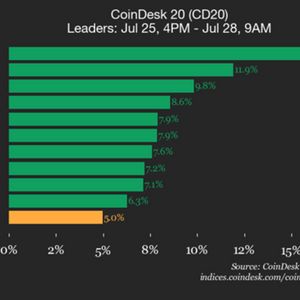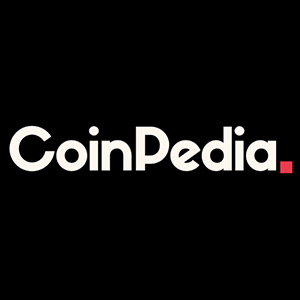Ethereum Whale’s Massive $14.58M Withdrawal: A Crucial Signal for HODLers
7 min read
BitcoinWorld Ethereum Whale’s Massive $14.58M Withdrawal: A Crucial Signal for HODLers In the ever-pulsating world of cryptocurrency, where market sentiments can shift with a single tweet, the movements of an Ethereum whale often send ripples that capture the attention of investors worldwide. Just recently, a significant transaction has emerged from the depths of the blockchain, stirring conversations and prompting questions about the immediate future of Ethereum (ETH). This isn’t just any transaction; it involves a colossal $14.58 million worth of ETH being moved from a major exchange. What does this mean for the market, and why should you pay attention? Unveiling the Ethereum Whale Phenomenon: Who Are These Market Movers? Before diving into the specifics of this recent move, it’s crucial to understand what an Ethereum whale is and why their actions command such scrutiny. In cryptocurrency terms, a ‘whale’ refers to an individual or entity holding a massive amount of a particular digital asset, enough to potentially influence market prices with their trades. For Ethereum, this typically means holding thousands, if not tens of thousands, of ETH. These large holders are often seen as ‘smart money’ because they usually have access to sophisticated market insights, extensive research, or simply a deep understanding of market cycles. Their movements—whether accumulating, distributing, or simply holding—can provide valuable clues about market sentiment and potential future price trends. When an Ethereum whale makes a move, it’s not just a transaction; it’s a signal. Decoding the Binance Withdrawal: What Does This $14.58M Move Signify for ETH? The recent transaction that caught the eye of on-chain analytics platforms like Onchain Lens involved an Ethereum whale who had been dormant for five months. This whale suddenly withdrew 3,711 Ethereum (ETH), valued at approximately $14.58 million, from the Binance exchange. This isn’t a minor transfer; it’s a substantial shift of assets. Generally, withdrawals of cryptocurrency from exchanges are interpreted as a bullish signal. Here’s why: Intent to Hold (HODL): When investors move their assets off an exchange and into personal wallets (like hardware wallets), it typically indicates an intent to hold those assets for the long term, rather than selling them in the immediate future. Exchanges are primarily for trading; personal wallets are for secure storage. Reduced Selling Pressure: Less ETH available on exchanges means less immediate supply for sale, which can reduce selling pressure and potentially support higher prices. Confidence in Future Price: A large withdrawal by an Ethereum whale suggests they believe the asset’s value will appreciate, making it worthwhile to secure it off-exchange. Conversely, large deposits to exchanges often signal an intent to sell, which can increase selling pressure. The fact that this particular whale had been inactive for five months before making such a significant withdrawal further amplifies its perceived importance, suggesting a calculated move rather than routine trading. Withdrawal vs. Deposit: Understanding Whale Signals To put this into perspective, let’s look at the general interpretations of whale movements: Whale Action Common Interpretation Potential Market Impact Large Withdrawal from Exchange Intent to HODL (Hold On for Dear Life); long-term bullish sentiment. Reduced selling pressure; potential for price appreciation. Large Deposit to Exchange Intent to Sell or trade; short-term bearish sentiment. Increased selling pressure; potential for price depreciation. Large Transfer Between Wallets Reorganization of holdings; preparing for DeFi/staking; or OTC deal. Neutral to slightly bullish, depending on context. Historical Precedents and Market Impact: How Have Past Ethereum Whale Moves Shaped the Market? This isn’t the first time an Ethereum whale has made a headline-grabbing move, and it certainly won’t be the last. Historically, significant whale movements have often preceded notable shifts in market dynamics, though correlation does not always equal causation. For instance, periods of sustained large withdrawals from exchanges have sometimes coincided with the beginning of bullish runs, as supply shock starts to set in. Consider the bull run of 2021: many analysts pointed to declining exchange reserves of ETH as a key indicator of institutional and large-holder accumulation. These movements signaled strong conviction among big players, which often trickles down to influence retail investor sentiment. However, it’s also important to remember that markets are complex. A single whale’s move, while significant, is just one data point among many. Geopolitical events, regulatory news, technological advancements (like Ethereum’s Dencun upgrade), and macroeconomic factors all play a role in shaping the broader market. Actionable Insights for the Savvy Investor: Navigating the Waters of Ethereum Whale Activity So, as a retail investor, how should you interpret and act upon the signals from an Ethereum whale ? Here are some actionable insights: Don’t Blindly Follow: While whale movements are informative, they shouldn’t be the sole basis for your investment decisions. Whales operate with different capital sizes, risk tolerances, and investment horizons than most retail investors. Use On-Chain Data as a Complement: On-chain analytics provides transparency into market activity that traditional finance lacks. Use platforms like Onchain Lens, Glassnode, or CryptoQuant to track exchange flows, large transactions, and other metrics. This data can confirm or challenge your existing market hypotheses. Consider the Broader Context: Always analyze whale moves within the context of the overall market. Is the broader market bullish or bearish? What are the prevailing narratives? Is there any significant news or upcoming events for Ethereum? Risk Management is Key: Never invest more than you can afford to lose. Even seemingly bullish signals from an Ethereum whale can be invalidated by unforeseen market events. Diversify your portfolio and consider dollar-cost averaging. Long-Term vs. Short-Term: A withdrawal indicating HODLing is a long-term signal. If you’re a short-term trader, this information might be less directly actionable than for a long-term investor. The movement of $14.58 million in ETH from Binance by a long-dormant Ethereum whale is a fascinating piece of the crypto puzzle. It underscores the power of on-chain analytics in providing transparency and hints at the underlying sentiment of major market participants. While not a definitive predictor, it serves as a compelling indicator that at least one significant player is confident in Ethereum’s long-term value, choosing to secure their assets rather than prepare them for sale. Conclusion: The Silent Roar of the Ethereum Whale The recent withdrawal of 3,711 ETH, valued at $14.58 million, by a previously inactive Ethereum whale from Binance is more than just a large transaction; it’s a potent symbol of conviction in the asset’s future. In a market often driven by speculation and fleeting trends, such a significant move towards self-custody by a major holder signals a strong ‘HODL’ intent. This action suggests that despite market volatility, a powerful force believes in Ethereum’s enduring value and potential for appreciation, removing a substantial amount of supply from immediate selling pressure on exchanges. For investors and enthusiasts alike, it serves as a compelling data point, reinforcing the importance of monitoring on-chain metrics to gain deeper insights into the complex dance of crypto market dynamics. While no single event dictates the market’s trajectory, the silent roar of this Ethereum whale offers a glimpse into the long-term vision held by some of the most influential players in the digital asset space. Frequently Asked Questions (FAQs) 1. What is an Ethereum whale in cryptocurrency? An Ethereum whale is an individual or entity that holds a very large amount of Ethereum (ETH), typically enough to influence market prices with their transactions. Their significant holdings mean their moves are closely watched by other investors. 2. Why is an ETH withdrawal from an exchange considered significant? When a large amount of ETH is withdrawn from an exchange, it generally indicates that the holder intends to keep (HODL) their assets for the long term rather than sell them. This reduces the immediate selling pressure on the market and can be seen as a bullish signal. 3. Does this specific Ethereum whale move guarantee ETH’s price will go up? No, a single whale’s move does not guarantee a price increase. While it suggests a strong holding intent and can be a positive signal, the cryptocurrency market is influenced by numerous factors including macroeconomic trends, regulatory news, technological developments, and overall market sentiment. 4. How can I track Ethereum whale movements? You can track Ethereum whale movements using on-chain analytics platforms like Onchain Lens, Glassnode, CryptoQuant, or Whale Alert. These platforms monitor large transactions and exchange flows, providing insights into significant holder activity. 5. What does ‘HODL’ mean in the context of cryptocurrency? ‘HODL’ is a popular crypto slang term that originated from a misspelling of ‘hold.’ It means to hold onto your cryptocurrency assets for the long term, regardless of price fluctuations, with the belief that their value will increase significantly over time. If you found this analysis insightful, please consider sharing it with your network! Your support helps us continue to provide valuable market insights and break down complex crypto events. Spread the knowledge and join the conversation! To learn more about the latest Ethereum trends, explore our article on key developments shaping Ethereum price action . This post Ethereum Whale’s Massive $14.58M Withdrawal: A Crucial Signal for HODLers first appeared on BitcoinWorld and is written by Editorial Team

Source: Bitcoin World



